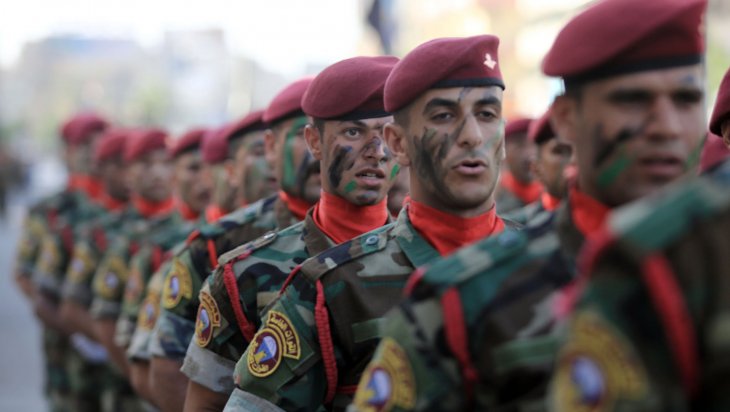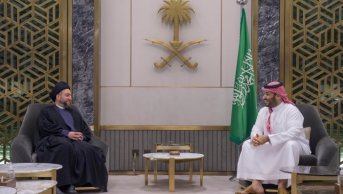The Post-2003 Iraqi Army: The Need for Solid Military Doctrine

Definitions of “military doctrine” vary according to schools of military thought, as well as the nature of the national security threats a country faces. The most concise definition of military doctrine can be made as “the set of fundamental principles that guide a country's armed forces in achieving its national security goals”. In other words, military doctrine is the phenomenon that makes military capabilities effective, efficient and it transforms military possibilities into military capabilities. The mission to establish a military doctrine for the Iraqi army after 2003 is one of the main challenges facing the Iraqi military institution.
The Conceptual framework of military doctrine
The development of military doctrine has been a fundamental element in military history. However, armed conflict and security threats have expanded and diversified, since the need to develop military doctrine has also increased. The term "military doctrine" is a complex and multidimensional concept that requires extensive knowledge of military literature. Military doctrine has been frequently mixed up with other doctrinal concepts such as political doctrine, religious doctrine, and intellectual doctrine. Military doctrine is also confused with other military concepts such as military strategy and defense policy.
Discussions of military doctrine always take place among the military elite and high-ranking commanders. Ordinary soldiers and even non-commissioned officers do not fully understand and comprehend the military doctrine of the army they belong to. Military doctrine practices, on the other hand, are primarily affected and influenced by the performance of the most ordinary soldier in both war and peacetime. It is precisely here that the importance of military doctrine for armies comes to the fore.
In the US army, military doctrine is known as "the fundamental principles that guide the actions of military forces or elements in support of national goals." On the other hand, in the army of the Russian Federation, military doctrine is defined as “the officially approved vision of the state on the readiness of the armed defense and armed protection of the Russian Federation”. In NATO, on the other hand, military doctrine is defined as "the fundamental principles that guide the actions of the armed forces in support of national goals. These principles are stable, but require uninterrupted judgment and evaluation in their application."
That is, the aims of military doctrine are not theoretical from an intellectual perspective, but rather a guide to action aimed at guidance and consultation, making the best use of military capabilities on the basis of practical experience. In rational armies, the formulation and development of military doctrine requires a continuous creative process that considers the experience of these armies, their needs in comparison to the security threats facing the country, their current and future capabilities, and technological developments in the military field. Military doctrine formation is a broad and comprehensive process that ranges from the policies and procedures applied by the main military branches of a given army to the tactics and techniques taught to new soldiers during their training.
The military doctrine formation process is based on the levels of managing wars and armed conflicts. Because of this, military doctrine is constructed at three levels: the strategic level, the operational level, and the tactical level.
At the strategic level, the formation of a military doctrine is based on the determination of the comprehensive doctrine of the state, which includes fixed orientations of national policy (domestic and foreign) and requires the identification of sources of danger to the national security of the country.
At the operational level, the formation of a military doctrine is based on determining the basic principles that the main units of the armed forces must stick to in guiding all their various military activities in order to achieve predetermined goals at the strategic level.
At the tactical level, the formation of a military doctrine is based on determining the basic principles that military formations and units attached to the main units of the army follow in order to fulfill their responsibilities as part of the armed forces and fulfill the tasks required of them.
The military doctrine of an army should determine the performance and behavior expected of that army during an armed conflict. This should be at the level of the army’s main combat branches, combat units and individual combat performances of officers and soldiers on the battlefield. The moral function of military doctrine is clearly manifested at the level of individual behavior in battles. In some military literature, the process of determining the combat performance and behavior of armies is called by terms such as “war doctrine” or “military doctrine” and it is considered an important component of military doctrine.
The formulation of the military doctrine of an army should contain answers to the following questions: Who are we fighting (clear identification of the enemy)? Why are we fighting (the goals of the armed conflict)? What are we fighting with (weapons and equipment)? How are we fighting (the structure of the command echelon and the control of forces, the order of the army, combat mobilization, rules of engagement, necessary training, military plans, support forces)? Where are we fighting (geographical boundaries of the actions of the armed forces in accordance with the national security interests of the country)?
While forming a military doctrine in the physical framework is based on the material, human, and technological capabilities of the state, it is based on the following elements in the theoretical framework:
- Determining the national interests of the country.
- Determining the sources of threats to the national security of the country.
- Determining the nature of the relationship between the military institutions and the political management of the country.
- Benefiting from the previous experience and practice of the military institution.
- Benefiting from the previous literature of military thought on the subject of military doctrine.
- Study and analysis of past armed conflicts.
- Adoption of the principle of participation and consultation in the command, planning and implementation of military operations.
The obstacles to creating a solid military doctrine for the Iraqi army after 2003
After the US invasion of Iraq in 2003, the US occupation forces disbanded the former Iraqi military institution, but this happened not in a wise and organized way, but rather in a chaotic manner, which led to the destruction of the physical, human, and moral structure of the army. Thus, the new military institution created later was deprived of taking advantage of the past experience and practice of the Iraqi army at the institutional level, which is an important element of creating the military doctrine. However, the new military institution was able to benefit from the experience of the former Iraqi army only on an individual level through former officers who were recruited to serve in the new army.
After 2003, the military institutions of Iraq managed to rebuild and improve the Iraqi army in terms of organization, weapons, and equipment. However, the efforts of the Iraqi army to establish its military doctrine have still faced obstacles.
After 2003, Iraq's military institutions faced various security threats such as Al-Qaeda, ISIS, and other terrorist organizations, uncontrolled militias, and organized crime gangs that they had to fight on the battlefields spread all over Iraq. These threats have forced Iraq's military institutions to engage in armed conflicts of a different nature than the conflicts they faced before 2003, and this has required new military training and planning patterns. Due to the intensity of the current tasks and the burden on it, the Iraqi military establishment has not had enough time to provide high-level training for the new types of combat that have emerged in Iraq and to improve the combat capabilities of the army. In addition, the managers of the institution also have not had enough time to study and analyze past, current, and potential armed conflicts, which are also important elements in creating a military doctrine.
The political system established in Iraq after 2003 is based on sectarian and nationalist "quotas". And this quota system has had the opportunity to influence the country's political (domestic and foreign) and security decision-making mechanisms. It has led to the emergence of multiple centers of power and after that period, successive governments have each represented their own power center instead of the main power center. As a result, successive governments have not been able to protect the military institution from the influence and interference of the parties sharing power and influence in post-2003 Iraq. Thus, the nature of the relationship between the military institution, which is a requirement for establishing military doctrine, and the political administration of the country, has not been clarified.
The existence of multiple parties capable of influencing Iraqi (domestic and foreign) political decision-making after 2003 has created an imbalance in the general doctrine of the state. Thus, these parties disagreed among themselves about determining the national interests and sources of threat to the national security of the country. This conflict frustrates the efforts of Iraq's military institutions to create solid military doctrine.
The sectarian and nationalist quota system adopted in the political process also imposed a similar quota system on the distribution of positions and rank allocation in Iraq's military institutions after 2003. This approach prevents military promotions from being based on effectiveness. On the other hand, with military leaders reaching positions through quotas, it undermines the military's ability to create a unified vision that will protect national interests and eliminate threats to national security. As a result of this, the principle of participation and consultation in the command, planning, and implementation of military operations, which is one of the important elements of creating a military doctrine, suffers.
After 2003, Iraq witnessed the existence of many armed formations and factions, as well as the Iraqi army, and has been politically subject to other groups, although some of them are legally and administratively under the umbrella of the state. These armed factions now retain control of the intersections of military operations and have certain tasks within Iraq's security plans. This situation requires the Iraqi army to cooperate with these groups, coordinate with them, and the General Command of the Iraqi Armed Forces to count them as supporting forces in the process of developing military plans and strategies. However, due to the different political backgrounds of these armed factions, it weakens the command, control, and coordination elements in orders and decisions and the information exchange between the Iraqi army and these factions. The absence of these elements is considered one of the obstacles to the formation of a military doctrine.
As a result, for the success of the efforts of the military institution of Iraq to ensure the physical and spiritual requirements for creating military doctrine, it is necessary to strengthen these efforts with the availability of the following elements:
- To combine its vision of threats to national interests and national security.
- Strengthening the sense of national identity within the military institution and preventing the consolidation of sub-identities (national and sectarian) within the army.
- The achievement of full independence of the military institution and its protection from the influence and interference of various political parties.
- Adoption of merit as a basic principle in the distribution of positions and military promotions
- For all armed forces operating under the roof of the state, unification of command, control, and coordination systems in issuing orders and instructions and in the exchange of information.








